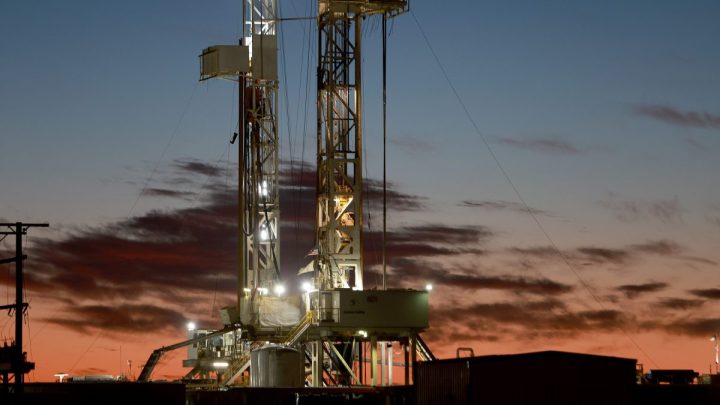
Are there signs of a slowdown for U.S. natural gas?

The shale revolution which started 15 years ago has helped make the U.S. the world’s leading producer of natural gas. The fossil fuel is used for heating and to produce electricity, among other things.
But there are some signs that a slowdown might be on the horizon. To get an idea of what energy producers are thinking right now, one place to look is what’s known as “the forward curve,” said Jacques Rousseau of ClearView Energy Partners.
“There are companies that are willing to buy or sell oil or gas in the future at a certain price,” he said. “If you’re a producer, you’re saying, ‘Well, what can I sell my gas for?’”
A year ago, sellers could get $8 per unit, but prices have dropped to around $2.33 for natural gas to be delivered next month. And the projected price isn’t set to crack $4 until December of next year.
“They’re deciding to lay down some rigs and to produce less,” Rousseau said.
That’s reflected in data from Baker Hughes, which builds and services drilling equipment. It said the number of natural gas exploration rigs in its most recent weekly count fell by 16 — the most in 7 years — to 141 rigs.
“It is a good harbinger of supply declines potentially in the future,” said Wood Mackenzie’s Eugene Kim. He said it can take a few months before that starts showing up as softer production, but “it is significant in the sense that the rigs are falling off in areas where there’s a lot of gas production growth.”
That includes areas like the Haynesville Shale formation which spans parts of Louisiana, Texas and Arkansas. Lower prices can discourage more drilling, according to Patricia Schouker of the Colorado School of Mines.
“I think part of it is, the market is flooded with natural gas right now,” she said — even in Europe, which became a huge buyer of U.S. liquefied natural gas after Russia’s invasion of Ukraine.
“You have new players like Egypt and Israel also entering the market against the U.S.,” Schouker added.
But the U.S. shale revolution is far from over. Ryan Kellogg of the University of Chicago said with the exception of the early pandemic, “natural gas production has really done nothing but grow. We’re setting production records pretty much every year.”
And he said that doesn’t seem set to change soon.
There’s a lot happening in the world. Through it all, Marketplace is here for you.
You rely on Marketplace to break down the world’s events and tell you how it affects you in a fact-based, approachable way. We rely on your financial support to keep making that possible.
Your donation today powers the independent journalism that you rely on. For just $5/month, you can help sustain Marketplace so we can keep reporting on the things that matter to you.

















